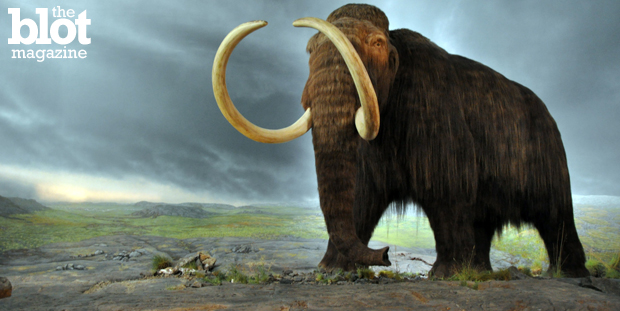Science is amazing. Through the knowhow of the scientifically inclined, we could, one day very soon, walk among (or at least kind-of near for fear of being trampled to death) among the mammoths.
Thanks to the efforts of a team of researches from Harvard Medical School, McMaster University in Ontario, Canada, and the Swedish Museum of Natural History, DNA from dead woolly mammoths has led to the sequencing of this long-tusked animal’s entire genome. Yes, our species’ ferocious ingenuity is something to awe at — even though the ethics riding on the coattails of all that science has a little catching up to do.
Our long-lost friends the mammoths could very well suffer “de-extinction” and begin to repopulate certain parts of the planet again. That’s good news for mammoths, I guess, but not such great news for the female elephants forced to act as mammoth-hybrid surrogates.
Various scenarios involving modern-day elephant and mammoth crossovers are in the works, and not without controversy. Mammoth-like creatures roaming the Arctic tundra is something a lot of folks would like to see.
The problem is, when humans introduce or reintroduce a species to a new environment (and remember, environments change over time), havoc is often the result. From cane toads and feral foxes in Australia to mountain goats in Washington State’s Olympic National Park to rebounding-from-extinction gray wolves terrorizing farmers, harm to ecosystems ensue.
Now imagine herds of mammoths running amok. Could happen. You never know. If that’s what’s in store for us down the line, scientists will have to find a predator to keep the mammoth populations in check — or from migrating to warmer, dense-with-human climate zones as creatures that are a mix of mammoth and Asian elephant might prefer hotter locales. So naturally, we’ll have to bring saber-toothed tigers back from extinction to help us cut down on our huge mammoth problem.
But maybe (bear with me here), our saber-toothed predators might experience a massive population explosion, thanks to a plentiful mammoth and human livestock (or perhaps just human) food source. We could hunt them, a sharp-shooter’s wet dream, but what if they turn out to be much more elusive and intelligent than we’d imagined?
We’ll simply have to dip back into the gene pool of extinct animals and come up with an even smarter, more fearsome predator to go after all of our saber-toothed cats. And presto! Some genius in an underground lab somewhere figures out how to cross a pterodactyl with a condor, and we’ll end up with a fleet of … well, bloody dragons, roaming the sky, looking for lunch.
Sound ridiculous? Yeah, it probably is. But just remember, it all started with bringing those pesky mammoths back to life. Fun with genetics isn’t always fun for everyone — Homo sapiens and an awful lot of other species included. Sounds like the premise for a good movie, though …
Carl Pettit is a contributing journalist for TheBlot Magazine.








